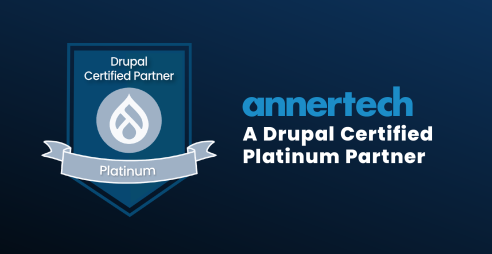Building a Website on a Budget
So you want a website.
Maybe it is your first website. Maybe you've been here before, but you're starting afresh. You're full of enthusiasm. In your dreams, your website looks like a flashy cruise liner - huge, and with every amenity money can buy. However, your budget stretches to a dinghy with an outboard motor. So how can you rationalise your aspirations within your financial constraints?
You don't have to be a paragon of fiscal rectitude, but you do need to prioritise, and think a little cleverly about how you can approach the project.

Taking the boat analogy a little further, both the cruise ship and the dinghy can arguably meet your needs. Both will keep you out of the water. Both will get you from A to B. Both have the potential for memorable holidays. Sure, the cruise ship has a roof, but you could elect not to go boating in the rain, so the question is: do you need a roof?
Making your website fit your budget is all about prioritisation, and the realisation that not every available feature is actually necessary, or often even a good idea.
Time, cost and quality. These three things go into your project. You don't want to compromise on quality, because that will cause you problems in the future. You don't want to rush it too much because that will lead to mistakes. Your budget is limited, so the only thing that can be a variable is the scope of the project.
An On-going Development Relationship
This is where things get interesting. A website is not just for launch day: it is for the duration of its life. And over that lifetime, we would expect it to see new content, new features, new sections, upgrades, design changes... Users expect to see change when they return to your site, and this empowers you, the site-owner, to embrace the process of change over a longer time. Rather than trying to build a huge monolithic project on day one, why not stagger your build over a longer time, and use it to bring new features to your users as they are ready?
Take, for example, a house. When you buy a house, it is generally considered a poor idea to immediately demolish part of it and build extensions. It takes time to digest, time to experiment, time to learn what elements you like and which you really can't live with. Equally, you need to learn how your needs have changed in your new house and how they are different to your imagined needs before moving in. You'll also want to think about how your house works within its environment - where does the sun come in? are there any problematic times of year?
So too with websites. Just as you'll figure out your needs over time, it pays to keep an eye on what is happening and changing in your industry and the internet at large since you decided to invest in a site.
Start Small, Extend and Prioritize
So, with websites. As you start to use your site you will have ideas and wants and needs. If you have started small, with a view to extending your site, these ideas can be embraced and your site will grow with you as your experience and that of your users illustrates what the needs really are. Change can now be embraced, nurtured and turned into features that both you and your users really love.
The irony is, that in most traditional projects, everyone is asked to do most of the planning, thinking and budgeting at the very outset - which is the point where everyone concerned has the least knowledge about the project, its constraints (both known and hidden) and its goals. This is essentially gambling and is fraught with the danger of failure.

An Example Timeline
To illustrate a staged approach to development, here's a timeline for a simple web project.
Day One - Install Drupal and build our first content type: the basic page. We've identified half a dozen pages of content that will describe who we are and what we do. We'll include a FAQ page to releive pressure from staff and some downloadable documents to reduce printing costs. We'll also install Webform to get a contact form on the site. We'll use the core menu system for navigation. We get metatags and Google Analytics to keep on top of our SEO. We'll set up a solid, responsive theme, but will intentionally keep the design very simple so that we can embellish it later.
Pre-launch - We set up the site on a specialist, tuned, managed Drupal hosting platform and are ready to go.
Launch Day - We go live with a great looking, dependable, flexible, and fast, responsive site. The site is saving us time and money, increasing our visibility and working for us - from the start.
Two months in - We decide that we want a blog, in order to entice visitors and to establish ourselves as thought leaders in our industry. So we add a content type and a views listing (blog listing landing page), and some additional design and styling to make the blog articles look pretty.
Four months in - The blog is going well and we're getting readership traction. We would like to get further traction and extend our reach into social media. We build in share and follow buttons and Twitter cards to drive traffic. We add a block of latest blog articles to the home page.
Six months in - We decide to integrate Mailchimp to let people sign up to our new newsletter, in order to increase our reach and better communicate with our prospective customers. We get a newsletter signup block on the home page and all blog pages. We add some more design flair to our blocks to make them really sing.
Eight months in - We decide to open up a dialog with our readers, adding comments, and of course, spam protection!
Twelve months in - We launch a range of beautiful products sold through a fully featured, integrated e-commerce solution from our site.
Who knows where we'll go next?
This is an example, but it could be your project. By starting with the bare minimum and extending the site over time, the site owners and developers have full knowledge of the project at all times and importantly, full knowledge of what they like and don't like. Each item of functionality is discrete and self-contained, allowing proper testing and proper scheduling of deployments.
The benefits of such an approach include:
- Spread the cost of your site build over a longer time for less financial impact
- Smaller chunks of work allow for defined, short-term goals and milestones
- Each new feature is the most important feature to the site-owners, right now, so they get what they want quickly
- Users enjoy a fresh site with each visit
- The site can react to changing business needs
- The entire team builds up project knowledge with every new feature, reducing potential for problems and on-boarding overhead, which all means a more efficient build process
- Better bang for your buck because only the most important items are built and only these items are styled. You never end up styling something that is never used, and equally, you never end up with an un-styled feature because you ran out of budget.
Consider this approach if you:
- are getting your first site built
- have limited budget, but grand aspirations
- are rebuilding your site from the ground up
- don't have a lot of time to spend writing lots of content or answering endless questions from your developers
- think your requirements may change, or are at all unsure what they are
When you're ready, we're ready.
If you want to discuss Annertech helping you build an award-winning website, please feel free to contact us by phone on 01 524 0312, by email at hello@annertech.com, or using our contact form.

Anthony Lindsay Director of Managed Services
With decades of experience, Anthony leads the Annertech Managed Services Team, delivering top quality design, development, and, ultimately peace-of-mind services to all of Annertech's wonderful clients.

